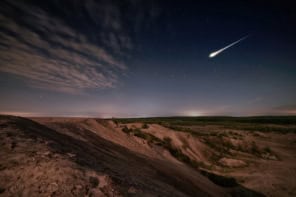The Hubble Space Telescope was launched on 24 April 1990. To celebrate its 30th anniversary in space, Physics World is publishing a series of blog posts exploring Hubble’s 10 best images, as chosen by the science journalist and editor Keith Cooper

With so many galaxies in the universe, some of them are bound to collide. When they do, the result can be a titanic maelstrom of stars, gas and spiral arms wrapping around one another, as shown in this Hubble image of the galaxies NGC 4038 and 4039. They’re collectively known as the Antennae Galaxies, because wide-field views show huge streams of gas and stars pulled out of the galaxies by gravitational tides and stretching away like giant insect antennae. A narrower view, meanwhile, shows the two galaxies locked in an embrace with huge dark clouds of dust spilling across their distorted faces.

Hubble’s best shots: NGC 1866, a great ball of stars
Few, if any, stars will collide during this merger, but the vast clouds of molecular gas within the galaxies can’t avoid one another. And so they clash, sparking intense bursts of star formation, which are visible as pink blotches of ionized hydrogen embedded in the twisted spiral arms. Eventually, the two galaxies will coalesce to form a single giant elliptical galaxy, and their supermassive black holes will find one another and merge, unleashing a burst of gravitational waves as they do so. We’ll have to wait another 400 million years for that happen, though.



